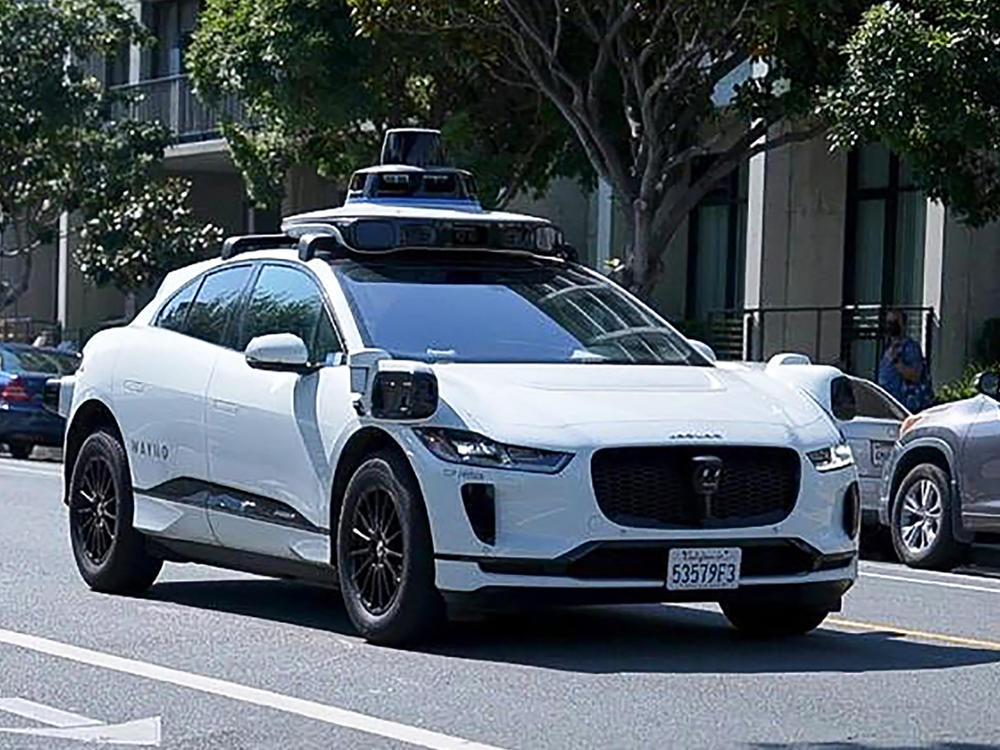Section Branding
Header Content
Waymo's robotaxi service set to expand into Los Angeles
Primary Content
If you happen to be in Hollywood and see a car go by with no driver at the wheel, don't be alarmed. After more than a year of testing, around 50 driverless robotaxis are debuting to the public across Los Angeles on Thursday.
The autonomous vehicles are run by Waymo, which is owned by Google's parent company Alphabet. Waymo started giving driverless rides to passengers in San Francisco last year and also operates them in Phoenix.
At first, the rides will be free and open to people who've signed up on Waymo's waitlist, which the company says has 50,000 people. In the coming weeks, Waymo will transition to a paid service. The company's coverage area serves 63-square-miles of L.A. — from Santa Monica to downtown.
The Southern California debut comes as controversy and blunders have plagued self-driving cars in San Francisco. Both Waymo and its competitor Cruise, which is owned by GM, have been blamed for running red lights, blocking public buses and getting in the way of emergency responders.
Cruise was involved in an incident that left a pedestrian severely injured in October — causing the company to halt operations and lose its operating permit in the state.
It hasn't necessarily been a smooth ride for Waymo in L.A.
In the run-up to its debut in the city, there have been complaints by L.A.'s mayor Karen Bass and protests by angry residents. The Teamsters union held one protest outside of Google's local office in October.
Unions and labor leaders say they're concerned the robotaxis will take away jobs and also pose a danger to workers who drive emergency vehicles.
"Autonomous vehicles like the ones that Waymo wants to unleash in our communities, have been wreaking havoc wherever they go," Yvonne Wheeler, president of the Los Angeles County Federation of Labor, said during the protest. "It's clear that this technology is not ready to be introduced into our roads and our cities."
Both Cruise and Waymo say their vehicles are safer than human drivers and that they've had relatively few incidents. They say they've driven millions of driverless miles without any human fatalities.
However, the incidents have garnered attention. And an Uber self-driving car, operating in full autonomous mode and with a safety driver in the vehicle, killed a pedestrian in Arizona in 2018.
"Once an unimaginable future, autonomous driving is now a real-world way of getting around for tens of thousands of people each week," said Tekedra Mawakana, co-CEO of Waymo.
The state of California approved Waymo's L.A. permit earlier this month, despite protests from local lawmakers.
"I think it's disastrous for this city," said Los Angeles City Council member Hugo Soto-Martinez. "It should be local leaders who should be making these decisions about people's public safety, not an unelected body."
He's supporting a state bill that's been gaining momentum, SB 915, which was introduced by Sen. Dave Cortese, Democrat from San Jose. This bill would change the way robotaxi companies are given permits. Instead of being approved by the state, it would pass permitting authority to local lawmakers.
"Under SB 915, the rules of the road will continue to be established and enforced by the people who live there," Cortese said in a statement.
Waymo is already setting its sights on its next robotaxi debut. It says it plans to start offering rides in Austin, TX, later this year.
Bottom Content

